Blog
6 September 2023
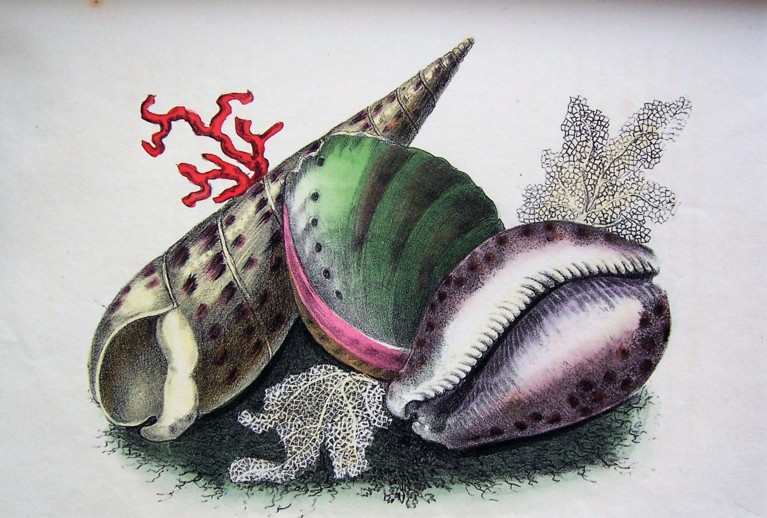
Nathaniel Whittock, The Art of Drawing and Colouring, from Nature, Flowers, Fruit, and Shells (1829)
Before summer memories fade of feeling sand between the toes – and while buckets and spades, the insect repellent and the windbreak are still not stowed away in their long winter storage – it may be the moment to look at the volumes in Emmanuel’s collection of colour-plate books that reflect the British craze for sea shells: for collecting and studying them, but also for displaying them and including them in decorative schemes, both in the garden and in the home.
A fashion for shell grottos and shell houses in gardens (their interiors decorated with shells) was long lasting, and several hundred are thought to survive, although many are in fragile condition. In 1624 James I had a shell grotto under the Banqueting House in Whitehall, but the splendid shell houses at Woburn Abbey (1626) and Skipton Castle (1627) are among the few seventeenth-century examples to survive. The poet Alexander Pope had a grotto with shells in his garden at Twickenham, while later the swirly patterns in many shell forms fitted curiously well with the taste for rococo decoration. Later again, the Misses Parminter, two well-travelled spinster cousins who built the extraordinary A La Ronde House near Exmouth (now a National Trust property), created a gallery decorated with shells that they had collected. Many a house boasted a cabinet displaying a shell collection.
In part the colour-plate books of the late eighteenth and early nineteenth centuries reflect the taste for amateur scientific enquiries pursued by private individuals. Some of the books devote themselves rather grandly to the study of ‘conchology’, a science of shells.
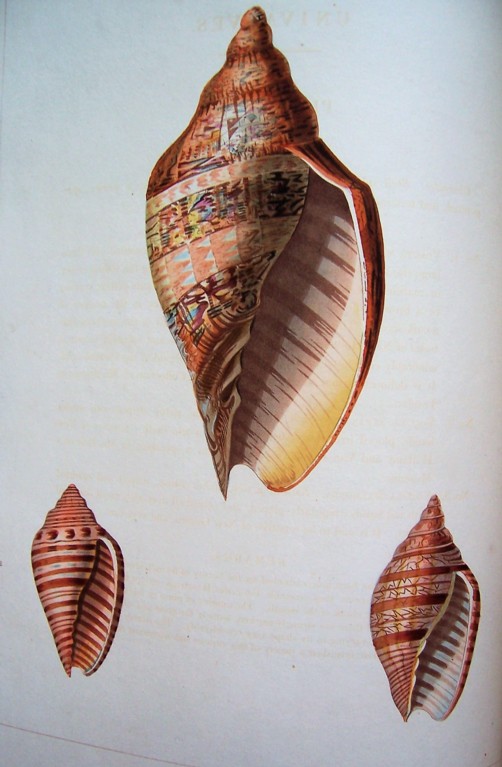
George Perry, Conchology, or The Natural History of Shells (1811). ‘Illustrated by Coloured Engravings Executed from the Natural Specimens and Including the Latest Discoveries’
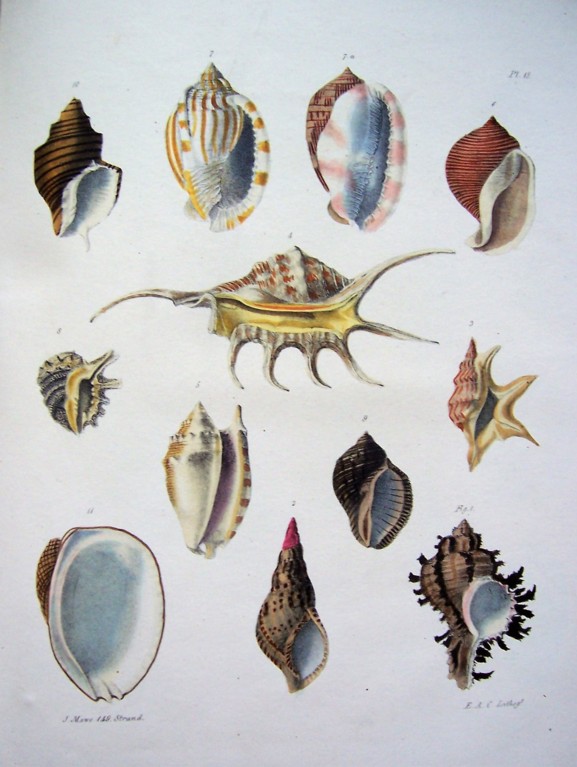
Edmund Crouch, An Illustrated Introduction to Lamarck’s Conchology (1827)
Specimens are grouped on the page for illustration according to their species in the new system promoted by Linnaeus.
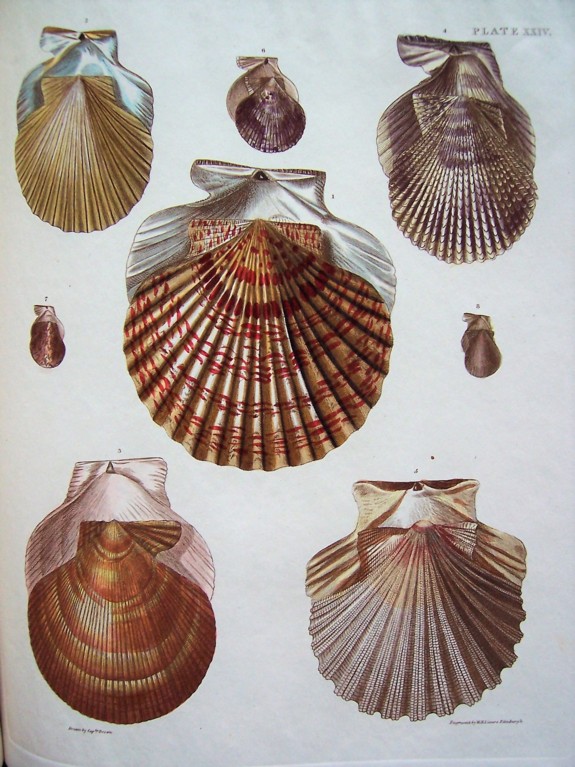
Illustrations of the Recent Conchology of Great Britain and Ireland, Drawn and Coloured from Nature by Captain Thomas Brown (1844)
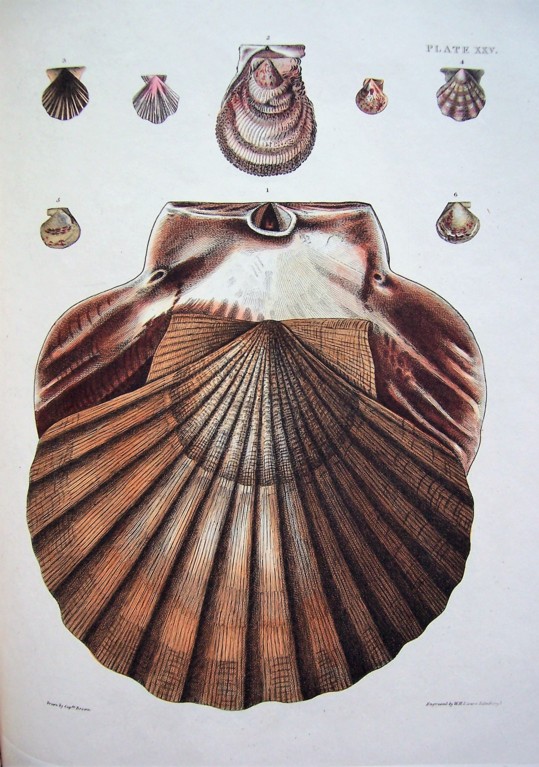
Brown, Illustrations
Each shell is drawn and coloured with a care that comes from meticulous observation.
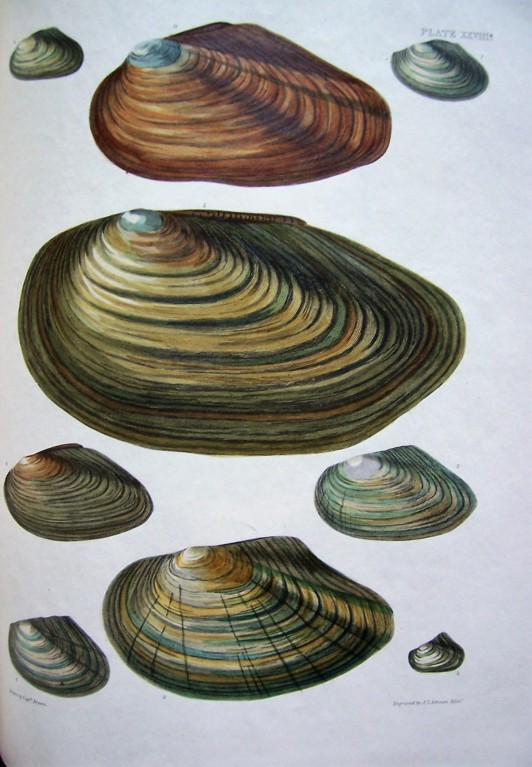
Brown, Illustrations
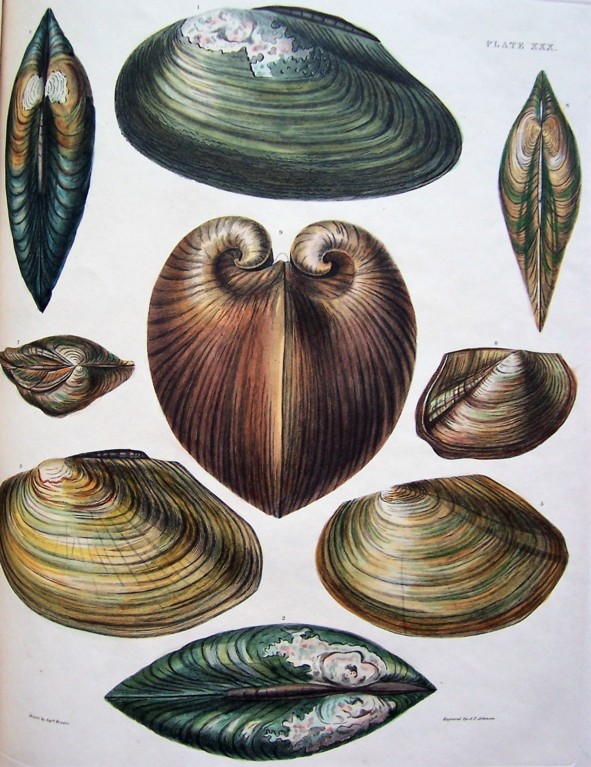
Brown, Illustrations
Yet the intricacy of surface, pattern and colour recorded by such close scientific observation goes along with a keen aesthetic appreciation of the sheer beauty of objects that any interested beachcomber might find scattered on the sea shore, perhaps still bathed with the transient glistening of sea water.
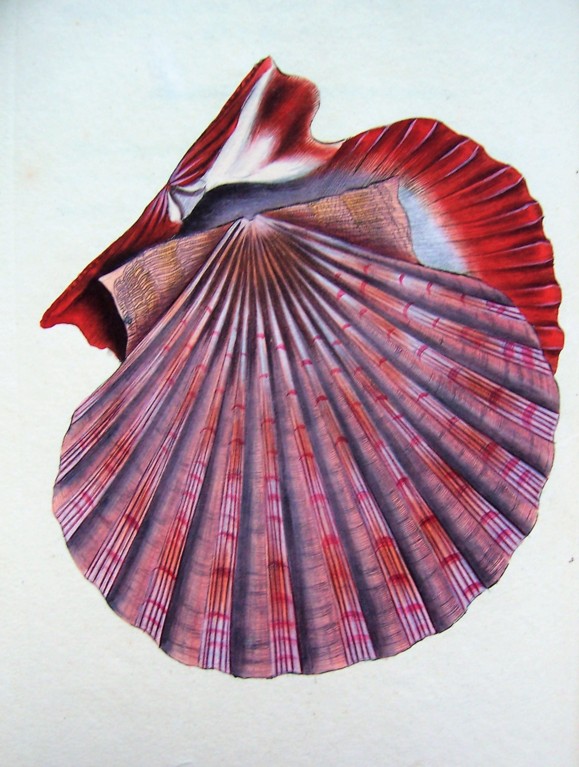
E. Donovan, The Natural History of British Shells, 5 vols (1799). ‘Including Figures and Descriptions of all the Species hitherto discovered
In Great Britain, Systematically Arranged in the Linnean Manner’
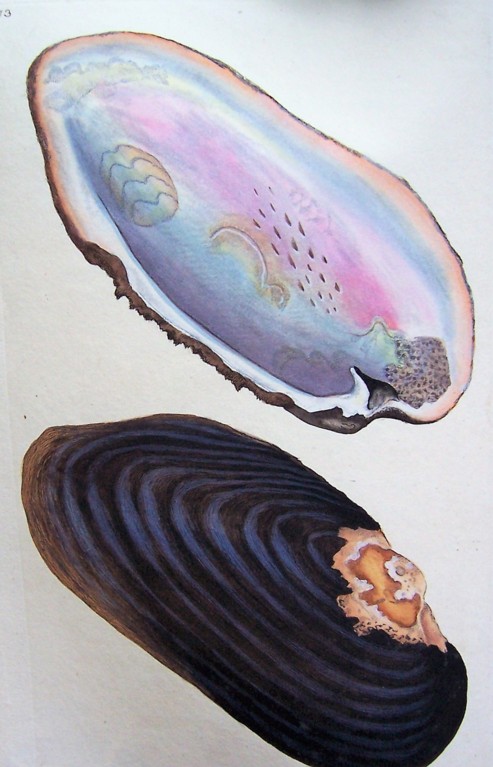
Donovan, Natural History
So, in some of the many colour-plate books of this period that set out to tutor the amateur artist, shells are included along with flowers and fruit as subjects for the water-colourist. In this guide, the same simple composition of shells is included in both uncoloured and coloured form.
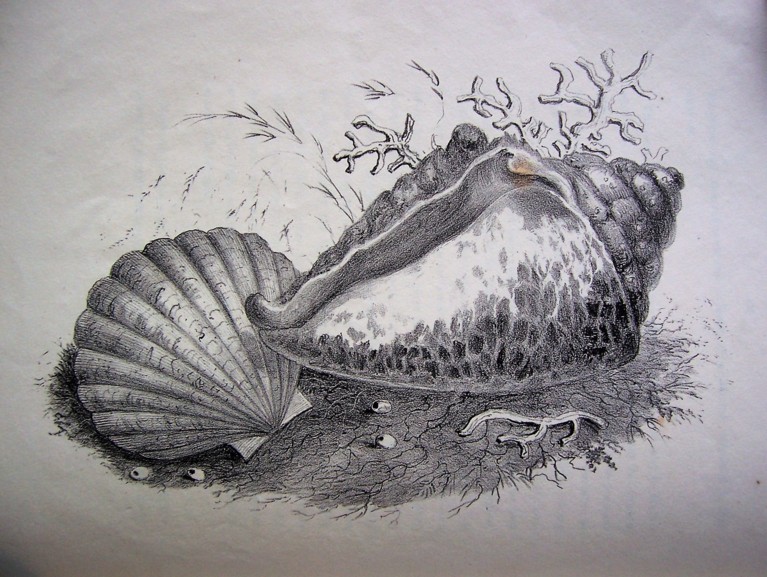
Whittock, Art of Drawing … Shells, ‘With Plain and Coloured Drawings’
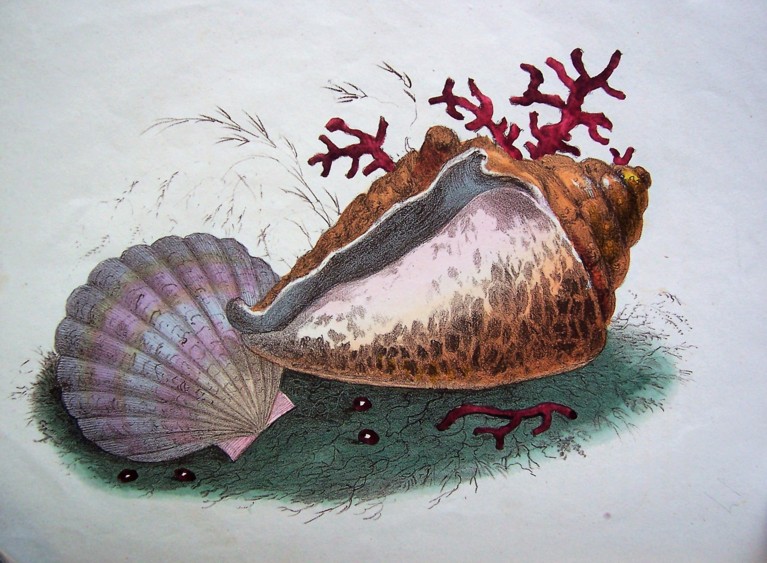
Whittock, Art of Drawing … Shells
The accompanying text provides precise instructions on which named colours from the paint box to apply in order to achieve the effect of the coloured example. Although it was not their intention, these guides for budding artists, with their before-and-after examples, illustrate how colour-plate books themselves were created in layers, where the black-and-white, initially-printed composition, with its shading and hatching, is then coloured by the water-colourist, as in these loving records of collected shells.
Barry Windeatt, Keeper of Rare Books
Images by Helen Carron, College Librarian
